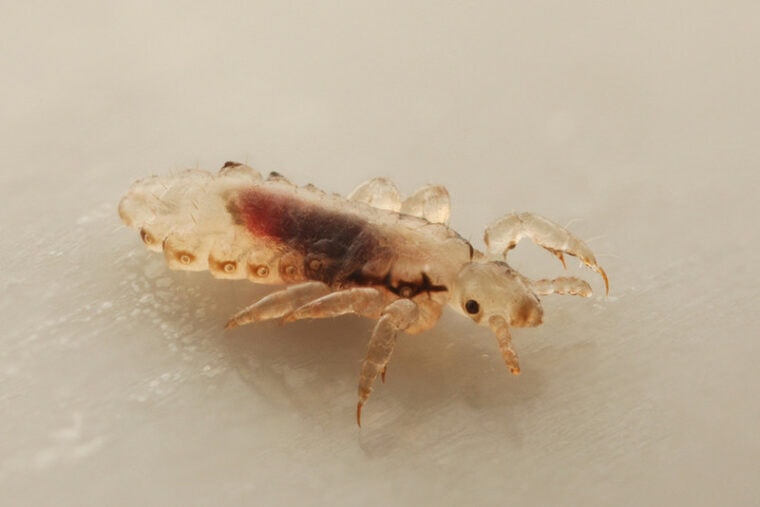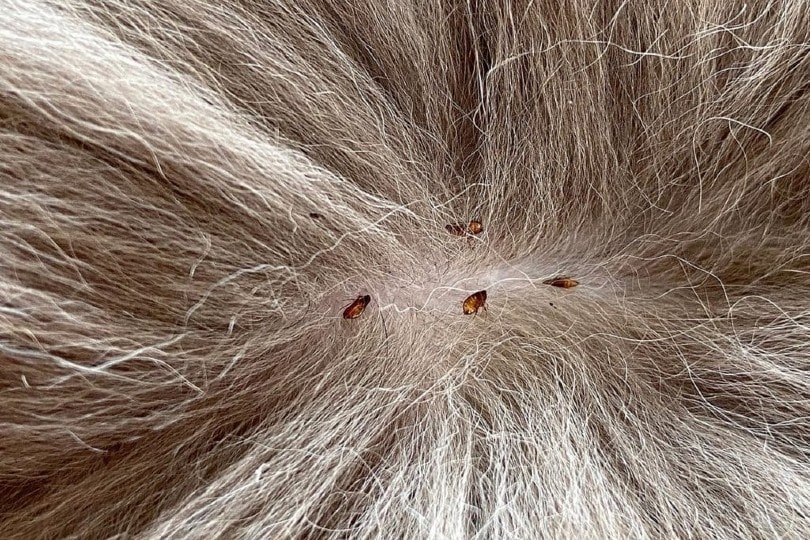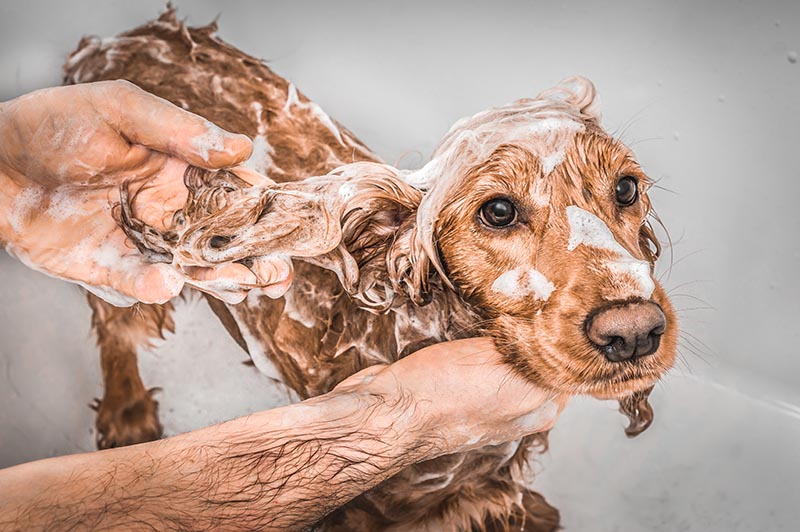
Head lice are common (particularly in households with small children) and spread like wildfire. But you don’t have to worry about spreading the lice to your dog. You only need to worry about your household spreading the lice to other people. However, that doesn’t mean dogs are immune to lice.
What Most People Don’t Know About Lice
When we think of lice, our minds immediately jump to head lice, probably because most people have experienced it at least once growing up. However, lice are host-specific, meaning they’re picky about their host.
The head louse, Pediculus humanis capitis, is one species, and it feeds only on—you guessed it—human blood. Hence why humanis is in the name. This species of lice doesn’t care to feed on your dog or cat.
Dogs attract three species of lice: Linognathus setosus, Trichodectes canis, and Heterodoxus spiniger.

How Do Dogs Get Lice?
For a dog to get lice, it has to come in contact with another infected dog. This can happen anywhere, from dog parks and kennels to pet stores and shows.
Unlike fleas, lice don’t jump, so they basically swing like Tarzan from one host to another.
Once aboard the new host, they start reproducing. Female lice lay their eggs next to the shaft of the hair follicle. Lice reach full maturity in 3 to 4 weeks and continue the process of laying more eggs.
Signs of Dog Lice

Are Lice and Fleas the Same Thing?
Fleas and lice cause similar symptoms but are not the same type of bug. Fleas, Ctenocephalides canis, tend to live longer and lay their eggs differently. They also don’t transfer from one host in the same manner as lice. Instead of requiring close contact with another dog, a dog can get fleas simply from being in a flea-infested area. Lice don’t live very long without feeding from a host, but fleas can.
How are Dog Lice Treated?
Treatment can take weeks to achieve 100% eradication, and unfortunately, you’ll have to treat all animals in the house.
If you suspect your dog has lice we recommend examination by your veterinarian for effective treatment and advice.
A veterinarian can offer prescription chemical products such as fipronil and selamectin to kill the lice. Other methods include using lice shampoo, conditioner, and a good ol’ fashioned fine-toothed comb to pick the lice out. It’s tedious, but it works, eventually.
Don’t forget about your house, either. Wash all fabrics, including couches, rugs, and drapes. Sanitize combs and brushes as well.

Preventing Dog Lice
Preventing lice is tricky since you can never truly know if they’re present. The best path is to talk to your veterinarian about year-round flea and tick prevention.
Of course, if your dog is infected, avoid all dog parks, shows, kennels, and stores until your dog is completely cured of the lice.
Conclusion
Head lice are extremely frustrating, to say the least. It takes weeks to get them out of your home entirely, and you have to do twice as much cleaning, plus caring for children at home. What a mess! Luckily, head lice don’t transfer to dogs, so that’s one less thing to worry about.
Featured Image Credit: devil79sd, Shutterstock






